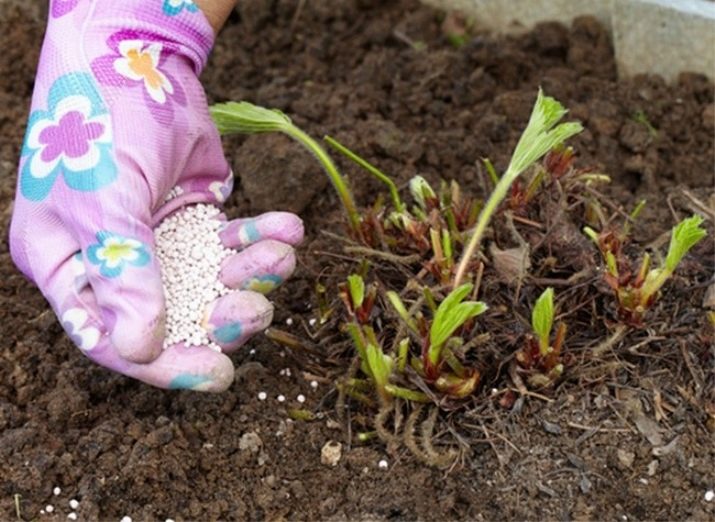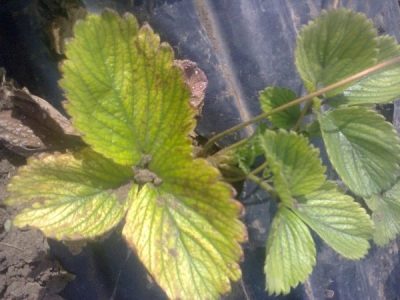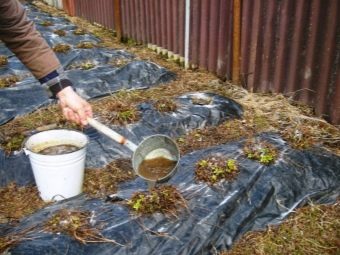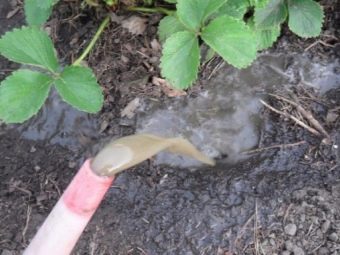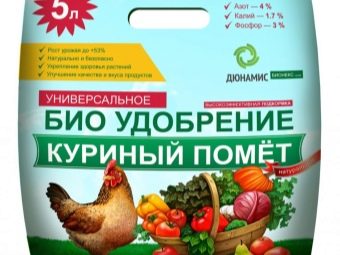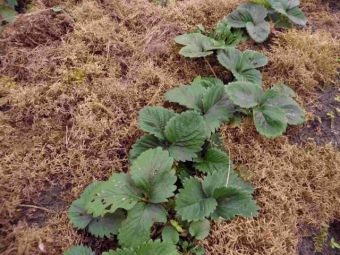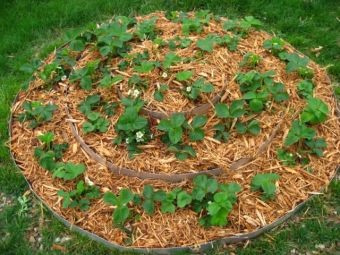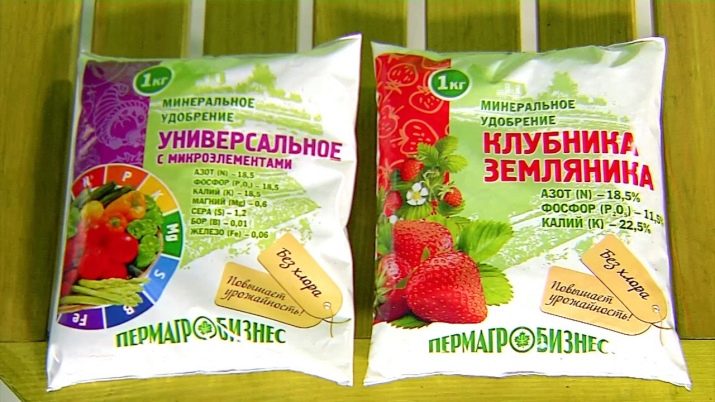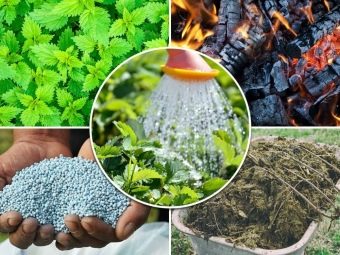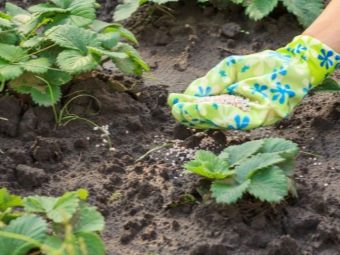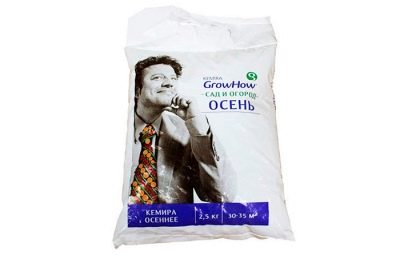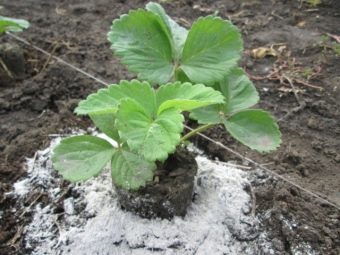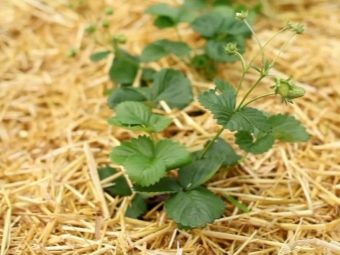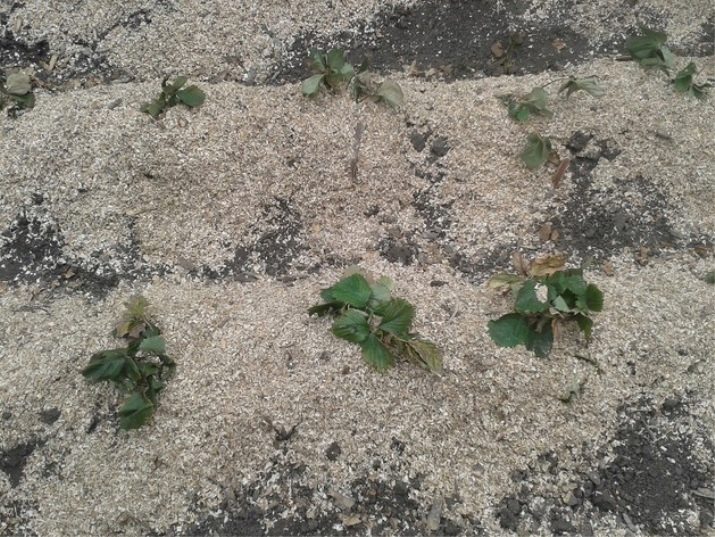How to feed strawberries in the fall?
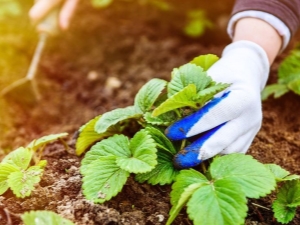
Even people far from gardening, most likely, have heard that without an effort of a gardener, only weeds grow well. As for the best gifts of the garden and the vegetable garden, with which the supermarket counters abound, then for all these products the most active participation of the person who needs to take care of the plants and timely feed them is necessary. If you want your home-made strawberry to be no worse than shopping, you will have to not only feed, but do it in a timely and correct manner.
What is the need to feed?
For many newcomers, top dressing and active care of a fruit bearing plant is an attribute of spring or summer, but after the harvest is completed, fertilization seems illogical - they say, next year there will be an ovary, then it will be fertilized. At the same time, strawberries should be fed in the fall - of course, apart from spring-summer procedures - and there are at least two reasons for this.
- Need to understand that strawberry is not an annual plant - even with the constant updating of the beds in order to grow the presentation of the crop for sale, the bushes live for two years. This means that the strawberry bush should overwinter, so the processing for the winter is very useful for him - he is small and rather weak. Theoretically, a plant could take everything needed from the ground, but dacha plots usually do not have too much wealth - the reason lies precisely in the desire of the summer resident to squeeze the maximum from the available hectares. Therefore, the bush weakened by the abundant harvest must always be fertilized after pruning - then it will have time to recover to the frost and normally pass through this test.
- Another important point is that The next harvest is laid in the previous year. Buds with the beginnings of flowers appear in the fall, precisely because of this, strawberries are one of the earliest among all fruits and berries. For the normal formation of a potential ovary, it is worthwhile to slightly enrich the soil depleted during the fruiting season, so the fall dressing on average allows for an increase in yield next year by about a third.
Fertilizer types
It is no secret that different plants need completely different substances for normal life, so some dressings cause more harm, and even the right choice of fertilizer with an incorrectly calculated dose can destroy the garden bed. Since in our case we are not talking about strawberry fertilizer as a whole, but about autumn fertilizing for the next harvest, it is strongly recommended to go deeply into the specifics of fertilizer selection.
Organic
Strawberries are very beneficial in that in the fall they can be fertilized with various organic substances, which most of the gardeners have their own production. So, in large farms for autumn feeding of bushes they use a mullein, which for this purpose needs to be diluted with water in a proportion of about 1: 10. The resulting mixture is not watered right away - you need to let the composition stand for several days, and then also partially quench adding half a glass of ash to it.
If there are no cows in the farm, but there are smaller pets, you can use the slurry of other animals. As in the previous case, such a substance is significantly diluted with water, but already in the proportion of 1: 8 - sour cream should serve as a guideline in terms of consistency.
It is acceptable to use manure, but it is quite eater, so it is distributed between the rows, and not laid out directly under the bush.
A very popular organic fertilizer, suitable for strawberry fertilizer for the winter, is chicken manure. There are chickens in almost every farm in rural areas, but it should be remembered that their litter is able to mark the plant with a chemical burn, so it is also carefully diluted and never used just collected raw materials.However, even in a noticeably diluted form, chicken manure should be used very carefully, for example, the space between rows should be watered with this fertilizer, but by no means the plants themselves.
Popular is the use of ash, which before applying to the bed should be sieved beforehand to remove large and foreign particles. Contrary to the usefulness of such feeding with her should know the measure - experienced gardeners are advised to scatter about 150 grams of powder per square meter of beds, trying to distribute the substance evenly.
If there are no domestic animals in the farm, you can get by with organic feedings of plant origin. Best of all, as such, is the sloping lupine, which is spread on the ground between the rows and sprinkled a little.
Alternatively, you can use some other plants, for example, legumes, and some gardeners do not limit themselves to specific crops at all, but with one condition - the plant should be mowed immediately after flowering. By the way, nettle can be useful as a feed for strawberries, but the scheme of its use for such purposes is somewhat different from the one described above. Such raw materials need to be poured with warm water and in such a form let it brew for several days, after which a mixture is obtained which is watered on the beds.
Mineral
It also happens that not one of the means described above is on hand, or it is there, but in an obviously insufficient quantity. In the modern world, such a problem is solved quite easily - the chemical industry allows, through the factory, to select everything that is necessary for cultivated plants and turn it into powder or granules, which are sold in any agricultural store. In general, practically any product that contains phosphorus and potassium abundantly is suitable.
If we talk about specific names, the most popular solution will be “Kemira Autumn” in the amount of about 50 grams for a meter per meter section. The application of mineral fertilizers usually involves the subsequent mulching of the soil - the procedure is usually carried out 2–3 days after top dressing and used for this purpose the fallen leaves of trees or sawdust.
Mixed formulations
Organic and mineral fertilizers are not necessarily separate - they can be used together. Moreover, the summer resident, who has access to home-made organic fertilizers, can independently mix them with purchased “chemicals” in order to obtain an optimal, pronounced effect. For example, a popular option among gardeners is the “strengthening” of a mullein not only with ash, but also with superphosphate. First, mullein is diluted according to the scheme already described - it takes about a liter per bucket of water. A double portion (a full glass) of ash and 20 grams of superphosphate are added to the settled mixture.
It is possible, by the way, to do without a mullein at all, but then the ashes need a little more and need to be “intensified” more actively. To begin with, a quarter of a kilogram of ash is dissolved in ten liters of water, and then 30 grams of potassium sulfate and 20 grams of nitroammofosca are added. Given the abundance and variety of bulk ingredients, it is important to achieve a uniform consistency of the composition, so that any portion of it is equivalent to the rest. The resulting slush is used on the assumption that half a liter is required for one bush.
Deadlines and rules for making
It is actually possible to fertilize the land before winter even in summer, because the main condition for adding fertilizing is that the crop has already been harvested from the bushes, and a new one is expected only next year. It should be understood that fertilizing is considered with the aim to survive the winter, therefore, it is not worth bringing it too early, otherwise the plant can use up everything useful before the onset of cold weather. The most common period for the last feeding in the year is September. Of course, there are exceptions to every rule.For example, remontant strawberries, even in conditions of a rather warm climate, may please the hosts with a crop in September and in October, and in some cases even before the first snow, therefore it is quite obvious that the September feeding for it cannot be the last .
If a variety planted on a bed is clearly related to some unusual one and does not end its cycle by September, it is necessary to clarify separately the peculiarities of fertilizer application for this particular variety. Provide all the necessary information will help the Internet, various printed gardening directories, and in some cases, even consultants agricultural store, which bought the seedlings of bushes.
Separately, it should be said that the fertilization of the otter-bearing bushes in autumn usually occurs in two stages. If fertilizing is made in two approaches, the gap between them should be about one and a half months, and the compositions themselves are used differently. An example of such manipulations can serve as fertilizer "Chemera Autumn", which is applied in the first half of September, and then supplement it with superphosphate or potassium humate, applying it already at the end of October - after pruning.
Whatever top dressing was used, after their introduction the bed with strawberries must be watered, sparing no water. Experienced gardeners claim that deliberately or accidentally ignoring this step leads to minimal absorption of beneficial substances by the plants, as a result of which they die in the cold.
The article deals mainly with autumn dressing of mature bushes, but strawberries are often planted during this period, and naturally, the feeding pattern is somewhat different when planted. As the main ingredient of the fertilizer, either fairly rotten compost or humus is used - each requires about three kilograms per square meter. The compost base in the specified amount is added with 30 grams of superphosphate and 10 grams of calcium chloride. The resulting mixture is poured to the bottom of the hole, dug under the planting of a strawberry bush. The introduction of such dressing implies the obligatory subsequent mulching of the soil around the young plant.
Experienced Gardeners Tips
As is often the case, a prepared novice can generally be familiar with the topic, but not know any secrets that are revealed only with experience. Timely use of the experience of other gardeners allows in the shortest possible time to succeed in the field of growing strawberries, therefore it is worth considering some common recommendations.
- Liquid strawberry fertilizers are very popular, but they are not customary to be applied to the soil later than the end of September. Such substances are effective and useful only in a relatively warm season.
- Some gardeners claim that mulching is incredibly effective in terms of maintaining nutrients in the soil. According to them, immediately covering the soil with mulch immediately after applying the top dressing can give an amazing result - the plant will not need new fertilizer for a whole year. Of course, even if this rule works, it is only provided that the technology of agricultural work was observed as accurately as possible.
- Nitrogen-based fertilizers enjoy a great love of gardeners because they provoke a rapid growth of green mass, but it is for this reason that such substances cannot be used in the fall. In preparation for winter, the plant, on the contrary, sheds leaves, as they are most vulnerable to cold weather. Fertilization on the basis of nitrogen can provoke the formation of new foliage too early in spring, as a result of which the strawberry bush will simply freeze.
- Autumn dressing in the case of strawberries is an obvious way to improve the outlook in view of the impending winter, but you need to understand that a good gardener is not limited to this measure.Preparing for the winter of the plant should take place in a complex, so the fertilizer should be combined, for example, with regular watering throughout September. If signs of disease or pests are found, do not think that frosts are the best way to get rid of the problem, because right now is the optimal time for treatment. In some cases, when fairly early night frosts are likely, the plant should be helped to get rid of the leaves and mustache, armed with shears or scissors.
Even in the care of the soil, one should not be limited to just top dressing - you need to spud the bushes and loosen the inter-row spaces, as well as mulch the soil. It should be noted that the strawberries are not covered before the first frosts, otherwise there is a risk that it will simply rot.
About how to fertilize strawberries in the fall, see below.


